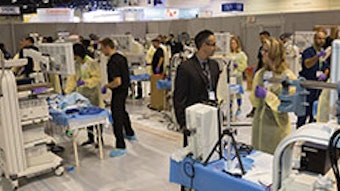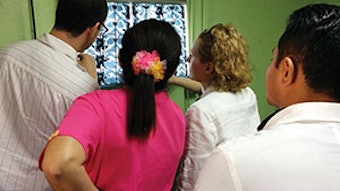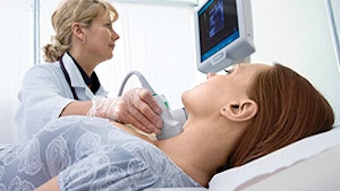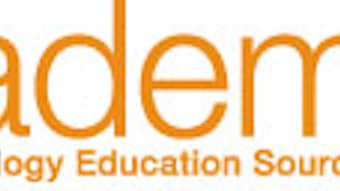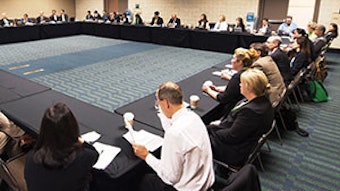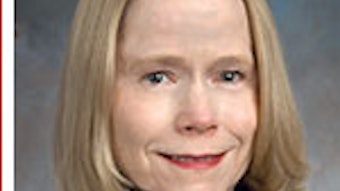Matching capacity to demand
I recently attended the digitalNow 2015 conference and had the good fortune to hear one of the most dynamic speakers and innovative thinkers that I have come across in many years. Rachel Botsman, co-author of What’s Mine Is Yours: The Rise of Collaborative Consumption, gave a revealing presentation on how “collaborative consumption” is changing the way business is being done worldwide through a collaborative economy that seeks to unlock value in different ways from existing assets.
By James C. Denneny III, MD, AAO-HNS/F EVP/CEO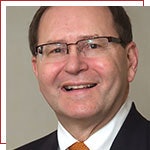
I recently attended the digitalNow 2015 conference and had the good fortune to hear one of the most dynamic speakers and innovative thinkers that I have come across in many years. Rachel Botsman, co-author of What’s Mine Is Yours: The Rise of Collaborative Consumption, gave a revealing presentation on how “collaborative consumption” is changing the way business is being done worldwide through a collaborative economy that seeks to unlock value in different ways from existing assets. She described cultural changes such as a trend toward access over ownership. Both individuals and corporations are evolving from asset-heavy entities to asset-light situations. The overall trust of organizations is declining, however, trust of members within organizations is increasing. Consumers as well as providers of service are seeking two-way engagement in their interactions. The overall economy, including healthcare, has significant idle capacity. Innovative ways to match this capacity to demand have fostered a number of successful business ventures such as Uber, Airbnb, and Zipcar.
Ms. Botsman says that traditional sources and markets can be disrupted by five major things. First, complex experiences can create opportunity. Most consumers favor simplicity in their dealings and want transactions to be as simple as possible. Second, waste within a system gives impetus to modify that system. Third, broken trust between the participants involved in any interaction can stimulate change. Fourth, redundant intermediaries lead to the desire for direct exchanges. Lastly, limited access is a primary driver for alteration. Any one of these drivers can lead to significant change in the way business is done. When looking at the healthcare system, one can clearly identify that each of these “disruptors” comes into play on a daily basis and thus the healthcare industry and even medical associations may see significant changes in the way business is transacted.
The term “value” is dominating the discussions for the evolution of healthcare. This value is defined in a quality and cost paradigm. However, based on what is happening in the consumer world, we should also be looking at simplifying the process one must go through to get care, increase access to the care that patients want, and facilitate more direct opportunities to receive care. As has been shown in multiple industries, “peer trust” is essential to optimizing these new relationships. The value and necessity of “peer trust” is evident in the two-way rating system used by many new companies as well as the patient satisfaction rating systems used for healthcare-related activities.
In combination, these trends have a propensity to bypass traditional organizations and create non-traditional communities based on needs and availability of services. Organizations that are successful will find different and novel ways to “be in customers lives.” When disruption takes place, there are three possible, typical reactions organizations can take. They can act like an ostrich and pretend nothing is happening, they can fight the change taking place, or they can be pioneers in changing their own destiny. The pioneers who recognize the change and embrace the opportunity to change with it can be very successful. They will figure out how new value will be created for their customers, how they can scale that value, and how best their customers can consume their product.
In the healthcare industry, this revolution has not taken off yet and opportunity abounds to alter the way we deliver care, evaluate and improve care, educate both providers and the public, communicate with patients and each other, and accomplish all of these in a very transparent fashion. We have already seen and will continue to see major changes in the education field with more “on-demand” and web-based content produced and consumed. As entrepreneurs focus on the healthcare industry we will likely see hybrid solutions with multiple sources of money driving them. New ideas for Alternative Payment Models will likely surface from smaller scale local experimental pilot models. Given the role of peer trust in a collaborative consumption system, it will be essential that healthcare providers maintain transparency and quality to gain consumer buy-in as the system evolves. This reputation capital will be what drives successful integrated systems and why it is essential that the house of otolaryngology works together through these changes.


